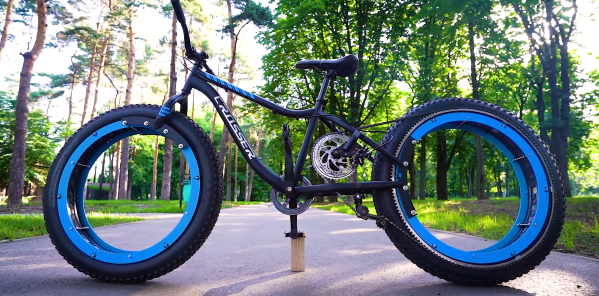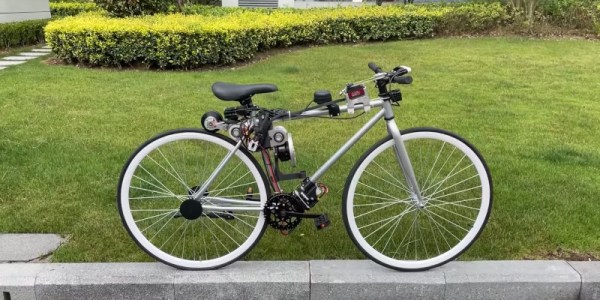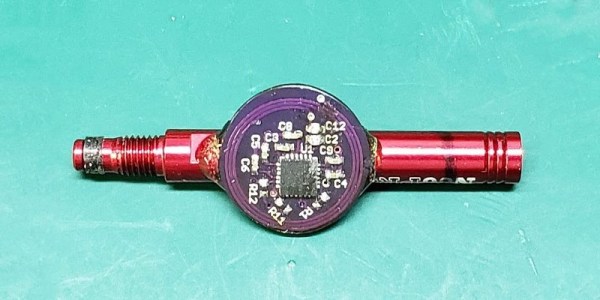Bicycle wheels have looked pretty much the same for over a century, and for very good reason: It works. [The Q] decided to ignore reason for a bit and focus on looks, so he built a fat tire bike without any hubs or spokes.
To make this work, he fabricated two sets of ring shaped “hubs” about the size of the rims, with a series of ball bearings around the circumference for the rims to roll around. The original forks were cut short and welded to a set of brackets that bolt to new hubs. This further complicates the back end as there’s nowhere to attach the sprocket cassette. The original rear hub, cassette and disc brake was moved to the inside of the frame. This drives the rear wheel using a second chain attached to a large ring sprocket mounted directly on the rim. The front brake was simply eliminated.
While this new design won’t be taking on existing bicycles, we doubt practicality was a priority in the build. It’s definitely a head turner, and we can’t help but see an opportunity to go even further and build a TRON bicycle.
Just recently, [The Q] turned another fat tire bike into an all-wheel-drive extreme off-roader. For another pedal-powered head turner, check out the strandbeest bicycle.

















